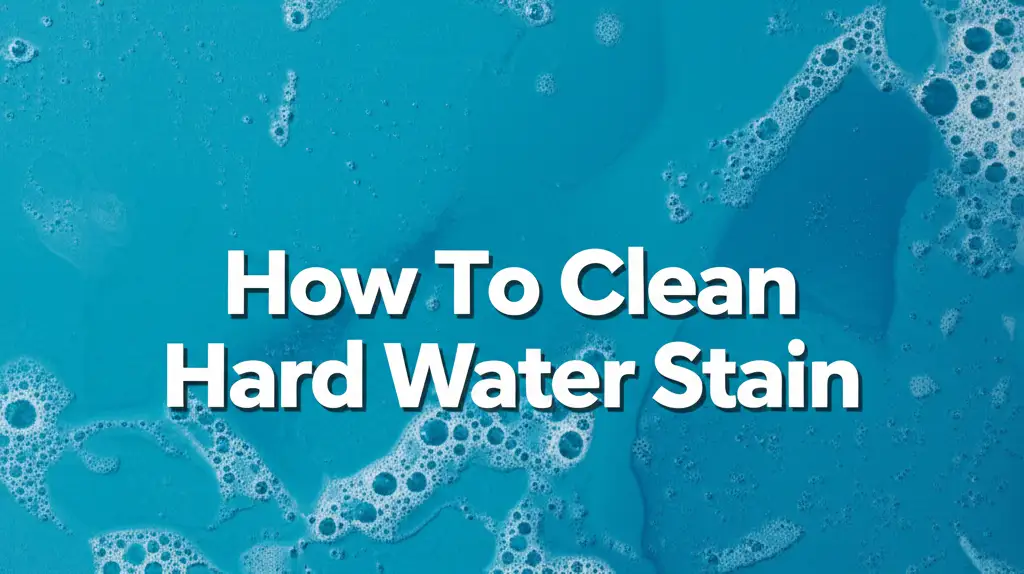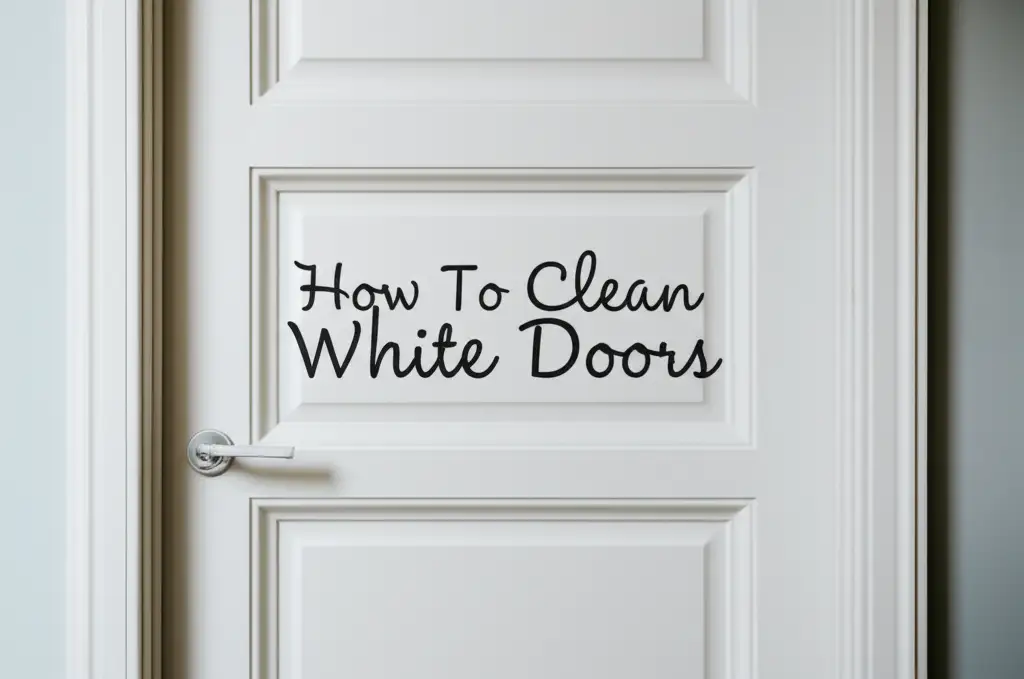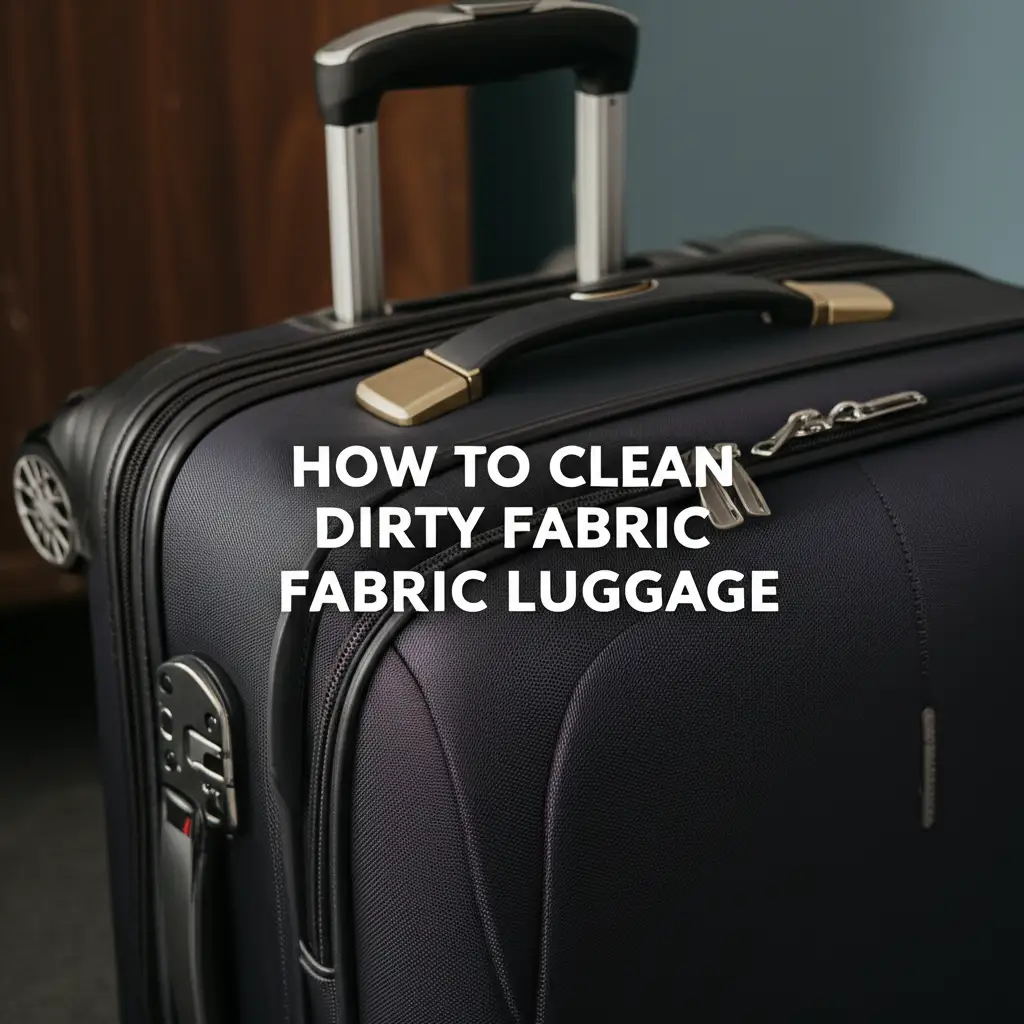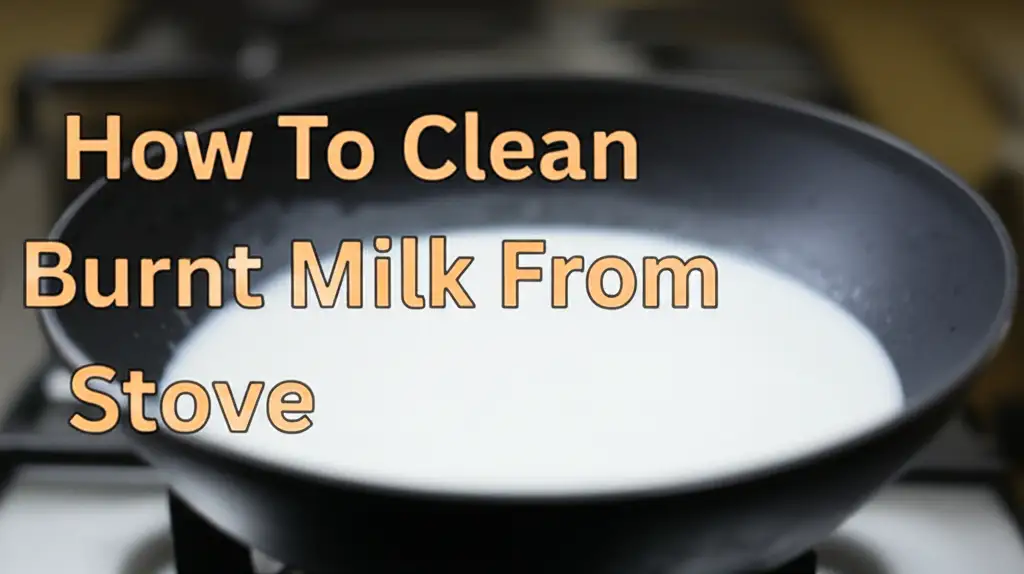· Home Cleaning · 20 min read
How To Clean Oil Stain
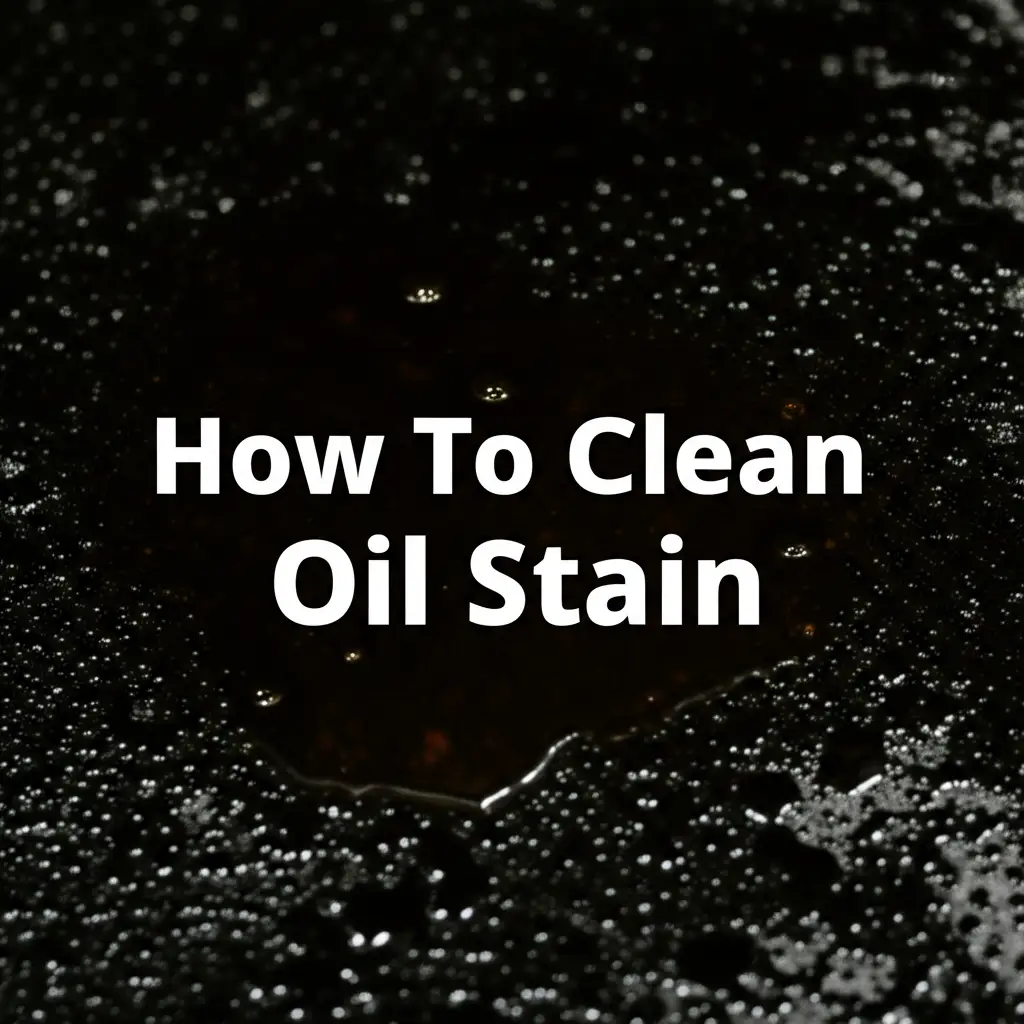
How to Clean Oil Stains: Your Complete Guide
Oil stains are common. They appear on clothes, driveways, kitchen floors, and more. A spilled cooking oil bottle or a car repair can leave a greasy mark. These stains are tough because oil repels water. This means water alone does not clean them. You need specific methods to break down the oil. I understand the frustration these stains cause. This guide helps you learn how to clean oil stain effectively. We will cover various surfaces and provide practical steps. You will find solutions for fresh spills and old, set-in marks. Get ready to restore surfaces to their clean state.
Takeaway
- Act quickly for fresh oil stains using absorbents.
- Use dish soap or degreasers for clothing and fabrics.
- Apply kitty litter or baking soda for concrete oil stains.
- Treat wood surfaces carefully with mineral spirits or specific cleaners.
- Always test cleaning solutions in an inconspicuous area first.
To effectively clean oil stains, you must use an absorbent material first, then a degreasing agent. This two-step process breaks down the oil and lifts it from the affected surface. Different surfaces require specific products and techniques for best results.
Understanding Oil Stains and Quick Action
Oil stains are challenging due to their hydrophobic nature. This means oil does not mix with water. Instead, it spreads and penetrates porous surfaces. When oil gets on a surface, it seeps into fibers or pores. This makes simple wiping ineffective. You need to use substances that can absorb the oil or break it down.
Quick action is crucial for oil stain removal. The longer an oil stain sits, the harder it becomes to remove. Fresh oil has not yet fully bonded with the surface. It has not fully dried or attracted dust and dirt. Acting fast increases your success rate. I always recommend having basic stain removal supplies ready. This allows you to tackle spills immediately.
Immediate Steps for Fresh Oil Spills
When an oil spill happens, your first goal is to absorb as much oil as possible. Do not rub the stain. Rubbing spreads the oil and pushes it deeper into the material. Blotting is the correct approach. Use clean cloths, paper towels, or absorbent powders.
Here are the immediate steps:
- Blot the excess: Gently press a clean cloth or paper towel onto the fresh oil. Lift it straight up. Repeat this step with fresh parts of the cloth until no more oil transfers.
- Apply an absorbent: After blotting, cover the entire stained area with an absorbent material. Common household items work well. These include baking soda, cornstarch, talcum powder, or even kitty litter. These powders pull the oil out of the surface.
- Let it sit: Give the absorbent material time to work. For fresh stains, 15-30 minutes might be enough. For larger spills or more porous surfaces, let it sit for a few hours. Some people let it sit overnight.
- Remove the powder: Once the powder has absorbed the oil, scoop or vacuum it up. You will see the powder clump together where it absorbed oil. After removing the powder, you can proceed with further cleaning steps using a degreaser. For extensive oil spills that require immediate attention on hard surfaces, you might find more general guidance on how to clean up spilled oil. This helps manage the initial large volume.
Having the right supplies on hand makes a difference. Basic items like dish soap, baking soda, and clean rags are invaluable. For certain types of oil, like cooking oil, specific tips exist. You can find more targeted advice on how to clean up cooking oil to handle those kitchen accidents efficiently.
Cleaning Oil Stains from Fabric and Clothing
Oil stains on clothing are very common. They can come from food, car oil, or cosmetics. Removing these stains needs a specific approach. It varies based on whether the stain is fresh or old. Treating fabric properly protects the material.
Fresh Oil Stains on Fabric
For fresh oil stains on clothes, quick action is key. Start by removing any excess oil without rubbing. Blot the area with a paper towel. Then, use an absorbent powder.
Here are the steps:
- Blot: Gently blot the stained area with a clean paper towel. Do not rub.
- Apply absorbent: Sprinkle a generous amount of baking soda, cornstarch, or talcum powder directly onto the fresh oil stain.
- Let it sit: Allow the powder to sit for at least 15-30 minutes. The longer it sits, the more oil it will absorb.
- Brush off: Gently brush off the powder. You may see that the powder has clumped or changed color, indicating it absorbed oil.
- Apply dish soap: Put a small amount of liquid dish soap directly onto the stain. Dish soap is an excellent degreaser. Rub it gently into the fabric with your fingers or an old toothbrush. Work it into the fibers.
- Rinse and wash: Rinse the area with warm water. Then, wash the garment in the hottest water safe for the fabric. Check the garment’s care label for temperature guidelines. Do not dry the garment in a dryer until you confirm the stain is gone. Heat can set the stain.
Old or Set-in Oil Stains on Fabric
Old oil stains are tougher, but not impossible. The oil has had time to dry and bond with the fabric fibers. You might need stronger methods or repeated attempts.
Follow these steps for old stains:
- Scrape: If there is any dried, crusted oil, gently scrape it off with a dull knife or spoon.
- Apply degreaser: Use a strong liquid degreaser or heavy-duty laundry detergent. Apply it directly to the stain. Work it into the fabric with an old toothbrush.
- Soak: Let the garment soak in warm water with more detergent or degreaser for at least 30 minutes, or even overnight for very stubborn stains.
- Pre-treat: Before washing, spray a pre-treatment stain remover directly onto the stain. Follow the product’s instructions.
- Wash: Wash the garment as usual, using the hottest water safe for the fabric. Add a cup of white vinegar to the wash cycle for extra stain-fighting power.
- Air dry and check: Always air dry the garment first. Check if the stain is completely gone. If not, repeat the process. Do not put it in the dryer.
It is important to remember that some delicate fabrics may require professional cleaning. Always test any cleaning solution on an inconspicuous area first. This prevents damage to the fabric.
Tackling Oil Stains on Concrete and Garage Floors
Oil stains on concrete, especially in garages or driveways, are common. They often come from vehicles. These stains can look bad and make surfaces slippery. Concrete is porous, meaning it has tiny holes. Oil seeps deep into these holes, making removal difficult. However, specific methods work well for these surfaces.
Fresh Oil Stains on Concrete
For fresh oil spills on concrete, immediate absorption is key. The faster you act, the less the oil penetrates the concrete.
Follow these steps:
- Contain the spill: If the spill is spreading, create a barrier around it with absorbent material. This prevents it from getting larger.
- Apply absorbent: Cover the entire fresh oil stain generously with an absorbent material. Good options include:
- Kitty litter: This is highly effective. Use clumping litter for best results.
- Baking soda: A fine powder that can absorb oil.
- Sawdust: Can also be used for larger spills.
- Sand: Less effective than kitty litter but can work in a pinch.
- Allow absorption: Let the absorbent material sit on the stain for several hours, or even overnight. It needs time to draw the oil out of the concrete.
- Sweep up: Once the material has absorbed the oil, sweep it up and dispose of it properly. You may need to repeat this step if a lot of oil was spilled.
Old or Set-in Oil Stains on Concrete
Older oil stains on concrete require more aggressive cleaning. The oil has had time to bond with the concrete. You will need a degreaser and some scrubbing power.
Here are the steps:
- Prepare the area: Sweep away any loose dirt or debris from the stained area.
- Apply degreaser: Choose a concrete degreaser. Many automotive degreasers work well. You can also use a strong liquid laundry detergent or dish soap. Pour the degreaser directly onto the stain.
- Scrub: Use a stiff-bristled brush or a push broom to scrub the degreaser into the stain. Apply firm pressure. Work the solution into the pores of the concrete.
- Let it sit: Allow the degreaser to sit on the stain for the recommended time on the product label. This usually ranges from 10 minutes to an hour. For very stubborn stains, some degreasers might require a longer dwell time.
- Rinse: Thoroughly rinse the area with a garden hose or a pressure washer. A pressure washer is very effective for concrete as it blasts away the loosened oil and degreaser. Make sure to rinse away all cleaning solution.
- Repeat if necessary: For deep or old stains, you may need to repeat the process multiple times. Sometimes, a “poultice” method is used. This involves mixing an absorbent powder with a degreaser to create a paste. You apply the paste, cover it, and let it dry. As it dries, it pulls the oil out. You can find detailed instructions on how to clean oil from concrete. For specific types of stains like engine oil, dedicated guides exist. These help you clean engine oil off concrete effectively. If you are specifically dealing with large concrete areas, such as a garage, you might look into techniques on how to clean oil off garage floor.
Always wear appropriate safety gear, like gloves and eye protection, when working with strong cleaning chemicals. Ensure proper ventilation.
Removing Oil Stains from Wood Surfaces
Wood surfaces add warmth and beauty to any home. However, they are also very porous. Oil stains can soak in quickly, making them challenging to remove. The method you use depends on the type of wood and its finish. Treating wood carefully prevents damage.
Understanding Wood Finishes
Before you start cleaning, identify the wood’s finish.
- Sealed or Finished Wood: This includes hardwood floors, furniture, or decks with a protective layer (polyurethane, varnish, wax, or paint). This layer offers some protection against penetration.
- Unfinished or Raw Wood: This wood has no protective coating. Oil will soak in very deeply and quickly. Removing stains from unfinished wood is often harder.
Cleaning Oil Stains on Sealed Wood
For sealed wood, the finish provides a barrier. Act quickly to prevent the oil from reaching the wood itself.
Here are the steps for sealed wood:
- Blot immediately: Use a clean, soft cloth or paper towel to blot the fresh oil spill. Do not rub. Rubbing can spread the oil or push it into the finish.
- Clean with mild soap: Mix a small amount of mild dish soap with warm water. Dampen a clean cloth with this solution. Gently wipe the stained area.
- Wipe dry: Immediately wipe the area dry with a separate, clean, dry cloth. Do not let water sit on the wood.
- Mineral spirits (for stubborn marks): If a greasy residue remains, dampen a cloth with mineral spirits. Wipe the area gently. Mineral spirits dissolve oil without harming most finishes. Test in an hidden spot first. Wipe dry immediately after cleaning.
- Wax or polish: After the area is clean and dry, reapply any wax or polish if necessary to restore the finish.
Cleaning Oil Stains on Unfinished or Raw Wood
Unfinished wood absorbs oil deeply. This means you will need a stronger approach. You might need to use absorbents and then a degreasing agent.
Follow these steps for unfinished wood:
- Apply absorbent: Cover the oil stain generously with an absorbent powder. Baking soda, cornstarch, or talcum powder work well.
- Let it sit: Allow the powder to sit for several hours, or even overnight. For very deep stains, cover the powder with plastic wrap to prevent it from drying out too quickly. This allows maximum absorption.
- Scrub gently: After the powder has absorbed the oil, gently brush it away. If a stain remains, mix a paste of baking soda and a small amount of water or mineral spirits. Apply this paste to the stain.
- Light sanding: For very stubborn stains on unfinished wood, light sanding might be necessary. Use fine-grit sandpaper (150-220 grit). Sand only the stained area, following the wood grain. Be careful not to sand too deeply.
- Clean and finish: After sanding, clean the area with a damp cloth. Let it dry completely. You may need to re-stain or re-seal the wood to match the surrounding area.
Always work in a well-ventilated area when using mineral spirits or other strong solvents. Always test any cleaning method on an inconspicuous area of the wood first. This ensures it does not cause discoloration or damage to the finish.
Handling Oil Stains on Carpets and Upholstery
Oil stains on carpets and upholstery can be frustrating. They often come from spilled food, body oils, or even pet products. These surfaces are porous, much like fabric, making it easy for oil to seep into the fibers. Swift action is important to prevent the stain from setting.
Immediate Steps for Fresh Oil Spills on Carpet/Upholstery
For a fresh oil stain, the key is to absorb as much of the liquid oil as possible before it penetrates deep into the padding or stuffing.
- Blot, do not rub: Place clean paper towels or a clean white cloth over the stain. Press down gently to absorb the oil. Do not rub, as this pushes the oil deeper and spreads it. Continue blotting with clean sections of the towel until no more oil transfers.
- Apply absorbent powder: Liberally sprinkle an absorbent material over the remaining oil stain. Baking soda, cornstarch, or talcum powder are excellent choices. Kitty litter (non-clumping, fine granules) can also work for larger spills.
- Let it sit: Allow the powder to sit on the stain for at least 30 minutes, or for several hours if the stain is larger. The powder needs time to draw the oil out of the carpet or upholstery fibers.
- Vacuum: Once the powder has clumped or appears to have absorbed the oil, vacuum it up thoroughly.
Cleaning Remaining Oil Residue
After vacuuming the absorbent powder, a residue might remain. You will need a degreasing agent to remove this.
Follow these steps:
- Prepare a cleaning solution: Mix a small amount of liquid dish soap (a few drops) with warm water. Dish soap is formulated to break down grease. You can also use a commercial carpet cleaner designed for oil stains.
- Apply and blot: Dampen a clean white cloth with the cleaning solution. Start from the outside edge of the stain and work your way inward. This prevents spreading the stain. Blot the stain gently; do not scrub vigorously, as it can damage carpet fibers.
- Rinse: After blotting with the cleaning solution, dampen a separate clean cloth with plain water. Blot the area to rinse away the soap residue. This is important because soap left behind can attract dirt.
- Dry: Blot the area with a dry towel to absorb excess moisture. You can also place a few layers of paper towels over the damp spot and weigh them down with a heavy object overnight. This helps draw out remaining moisture and residue.
- Fluff the fibers: Once dry, gently fluff the carpet or upholstery fibers with your fingers or a soft brush to restore their texture.
- Repeat if necessary: For stubborn or older stains, you may need to repeat the cleaning process multiple times. Patience is key.
Always test any cleaning solution on an inconspicuous area of the carpet or upholstery first. This ensures it does not cause discoloration or damage. Ensure good ventilation when cleaning. For very large or deep stains, professional carpet cleaning might be the best option.
Dealing with Specialized Oil Stains
Not all oil stains are the same. Some come from cooking, others from machinery. Each type of oil and its source can influence the best cleaning method. Understanding these differences helps in effective stain removal.
Cooking Oil Stains
Cooking oil is a very common source of stains, especially in kitchens. This includes vegetable oil, olive oil, and butter. These oils are typically lighter than motor oils but can still deeply penetrate surfaces. You might encounter them on countertops, clothes, or kitchen floors. Targeted cleaning helps when you need to specifically clean vegetable oil.
- On Surfaces: For kitchen counters or stovetops, blot excess oil immediately. Then, spray a degreasing kitchen cleaner directly onto the area. Wipe with a clean cloth. For very sticky residues, a paste of baking soda and water can be applied, left to sit, then wiped away.
- On Fabrics: Treat cooking oil stains on clothes as described in the fabric section. Use an absorbent powder first, then liberal application of dish soap before washing. Heat sets cooking oil stains, so avoid the dryer until the stain is fully gone. If you frequently handle large quantities of cooking oil, understanding how to clean up cooking oil is a valuable skill.
Engine Oil Stains
Engine oil is much heavier and often contains additives that make it dark and more difficult to remove. These stains commonly appear on concrete driveways, garage floors, or tools. They pose a significant challenge.
- On Concrete: Use heavy-duty absorbents like kitty litter or specialized oil-absorbing powders. For set-in stains, a strong concrete degreaser or poultice method is necessary. Mix the degreaser with an absorbent material to create a paste. Apply it to the stain, let it dry, and then scrape it off. Pressure washing often helps after degreasing. Detailed instructions on how to clean oil from concrete are very relevant here. For very specific engine oil spills, knowing how to clean engine oil off concrete offers targeted solutions.
- On Tools/Parts: For oil on tools or engine parts, specialized automotive degreasers are effective. Apply the degreaser, let it sit, then scrub with a stiff brush. Rinse thoroughly. This is also applicable when you need to clean oil off engine components themselves. For internal components or specific parts, you might even look at how to clean oil pan.
Oil Stains on Pavers
Pavers are similar to concrete in porosity. Oil stains on pavers can be tough due to their rougher texture and gaps.
- Absorption and Degreasing: Start by applying an absorbent like kitty litter or sand. Let it sit for hours to draw out the oil. Then, use a stiff brush and a strong degreaser. Scrub the stain thoroughly.
- Pressure Washing: A pressure washer can significantly help in cleaning pavers. It forces the degreaser deeper and blasts away the loosened oil. You can find more specific advice on how to clean oil off pavers.
When dealing with specialized oil stains, safety is paramount. Always wear gloves, eye protection, and ensure good ventilation. Dispose of oily waste materials responsibly, as they can be hazardous to the environment.
Preventing Future Oil Stains and Maintenance
Cleaning oil stains is a reactive process. A proactive approach involves preventing them in the first place. Good habits and regular maintenance can significantly reduce the occurrence of stubborn oil marks. Prevention saves time and effort.
Tips for Preventing Oil Spills
- Use drip trays: Under vehicles or machinery, place drip trays. These catch any leaks before they hit the floor.
- Work on protected surfaces: When doing car repairs or any oily work, lay down old cardboard, newspapers, or plastic sheeting. This protects your garage floor or driveway.
- Be careful with cooking: When cooking, use splatter guards on pans. Keep paper towels or a clean cloth handy for immediate small spills.
- Store oils properly: Ensure oil containers are sealed tightly. Store them in designated areas where spills are less likely to cause damage, like on a shelf with a lip.
- Wear old clothes: When working with oil, wear old clothes that you do not mind getting stained. This protects your good garments.
Regular Maintenance for Surfaces
Regular cleaning helps prevent oil from building up and becoming a set-in stain. This also makes future spills easier to clean.
- Kitchen surfaces: Wipe down kitchen counters and stovetops daily after cooking. This removes any small oil splatters before they can dry and become sticky. Use a degreasing cleaner for best results.
- Garage and driveways: Sweep or hose down your garage floor and driveway regularly. This removes loose dirt and small oil droplets that might accumulate over time.
- Tools and machinery: Clean tools after each use. Wipe off any oil or grease. This keeps them in good condition and prevents transferring oil to other surfaces.
- Floor mats: Use floor mats in high-traffic areas, especially in kitchens or workshops. These mats can absorb spills and protect the floor underneath. They are easier to clean or replace than the floor itself.
- Check for leaks: For vehicles or machinery, perform regular checks for oil leaks. Addressing a small leak early prevents a large, difficult-to-clean stain later.
By adopting these preventative measures and maintaining your spaces, you can greatly reduce the chances of encountering frustrating oil stains. A clean environment is easier to maintain than to restore. I find that a little effort upfront saves a lot of cleaning hassle later on.
FAQ Section
Can old oil stains be removed?
Yes, old oil stains can be removed, but they require more effort. The oil has bonded deeply with the surface. You will often need stronger degreasers, longer soaking times, or repeated applications. For concrete, a poultice method often works best for very old stains.
What is the best household item for oil stains?
For fresh oil stains, absorbent powders like baking soda, cornstarch, or talcum powder are excellent. For breaking down the oil itself, liquid dish soap is a highly effective and common household item. Its grease-cutting properties make it ideal for fabrics and general surface cleaning.
Does vinegar remove oil stains?
White vinegar is not a primary degreaser. It works well for general cleaning and deodorizing. It can help rinse away soap residue or brighten fabrics. However, it will not directly break down an oil stain. Use a degreaser like dish soap first, then vinegar can be part of the rinse or wash cycle.
How do you remove oil stains without washing?
To remove oil stains without washing, especially from delicate items or carpets, apply an absorbent powder first. Let it sit to draw out the oil. Then, gently brush or vacuum it away. Follow with a direct application of a degreasing agent like dish soap on a damp cloth, blotting the stain, then blotting with clean water to rinse.
Is WD-40 good for removing oil stains?
WD-40 is a solvent and lubricant. It can sometimes loosen fresh oil stains by dissolving them. However, WD-40 itself is oil-based and can leave its own oily residue or stain. It is generally not recommended as a primary oil stain remover. Stick to products designed for stain removal or degreasing.
What if the stain is on a delicate surface?
For delicate surfaces like silk, suede, or specific types of wood finishes, extreme caution is necessary. Always test any cleaning solution in an inconspicuous area first. For very delicate items, it is often best to consult a professional cleaner. They have specialized knowledge and tools to prevent damage.
Conclusion
Oil stains are a common problem. They can seem difficult to remove. However, with the right knowledge and tools, you can effectively tackle them. We explored methods for various surfaces. Remember, quick action is often the most important step for fresh spills. Absorbents and degreasers are your best friends in this fight.
You now understand how to clean oil stain from fabrics, concrete, wood, and more. Each surface requires a slightly different approach. Always prioritize safety. Test products in a small, hidden area first. This prevents accidental damage. Take pride in restoring your surfaces. A little effort goes a long way. Do not let oil stains linger. Start cleaning them today and keep your spaces looking their best.
- oil stain removal
- grease stain
- cleaning tips
- home remedies
- stain removal

